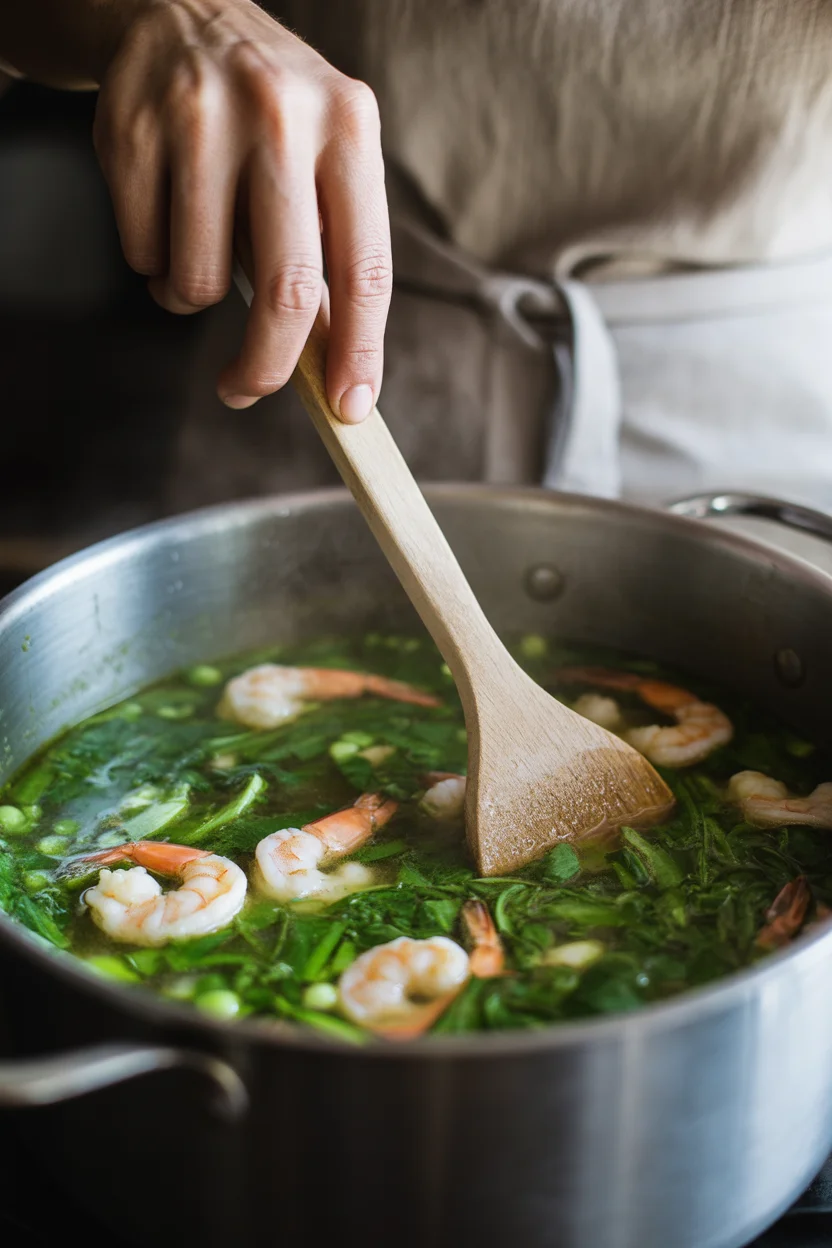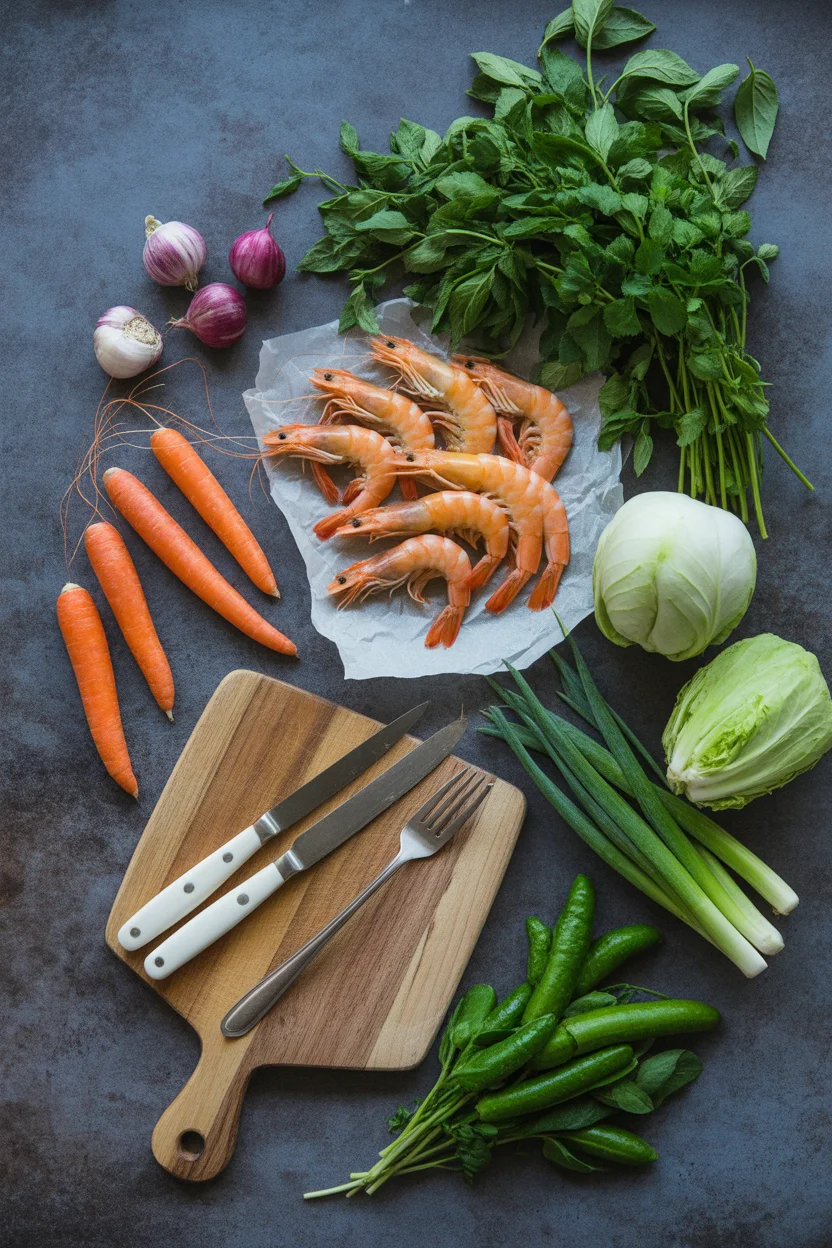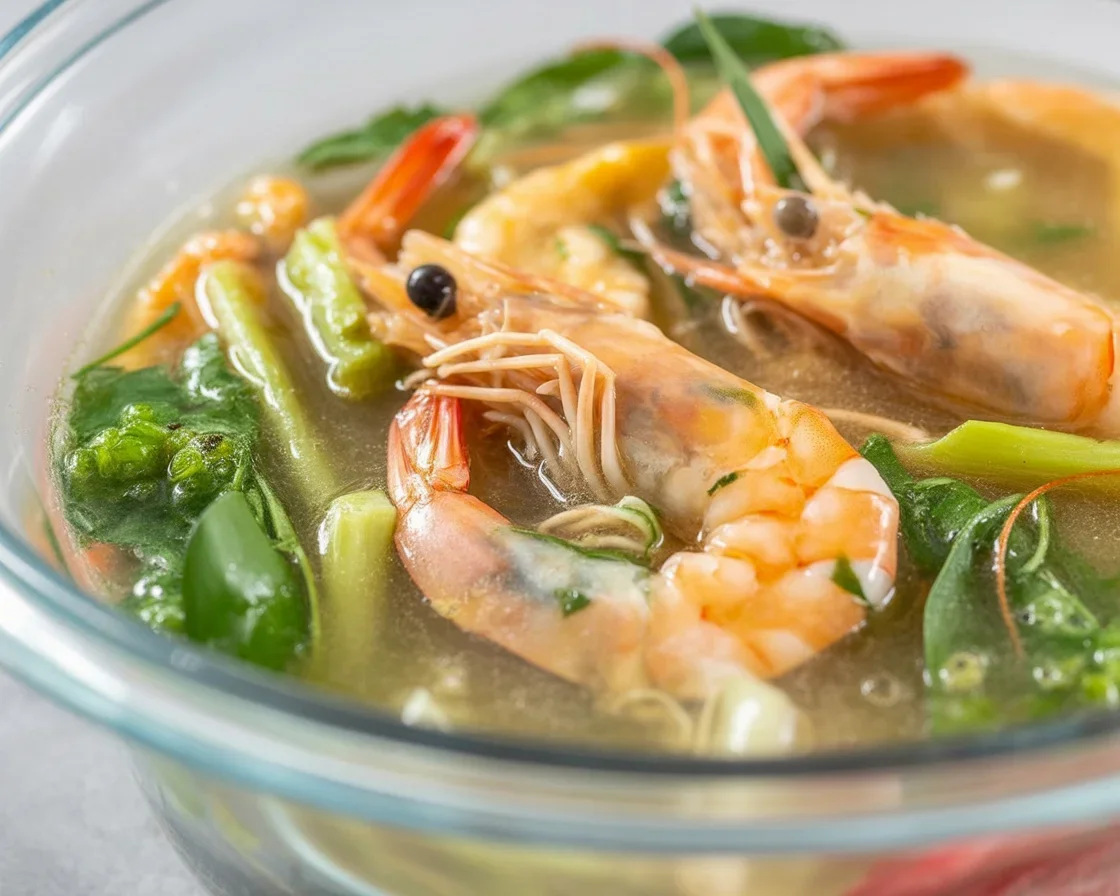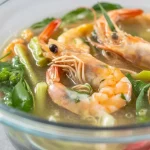- Introduction to sinigang
- Ingredients needed
- Cleaning shrimp
- Preparing tamarind broth
- Adding vegetables
- Seasoning
- Serving hot
- Common Questions
- Tangy, Heartwarming, and Always a Hit
Filipino sinigang na hipon with vegetables is hands-down my absolute go-to when rainy weather hits or I’m just seriously craving something comforting and tangy. Have you ever tried wrangling dinner when it feels like your brain’s checked out for the day? Yeah, same here. This soup saves me every single time. It hits that perfect mix of tart, savory, and fresh, and honestly, it’s easier to throw together than you’d think. If you’ve mastered crowd-pleasers like Filipino grilled pork BBQ or even a classic Filipino tinola with spinach chicken, you can totally nail tangy sinigang na hipon with vegetables for your next meal.

Introduction to sinigang
Let’s talk about sinigang for a sec. And no, you don’t have to say it with the perfect accent, promise! In Filipino kitchens, sinigang is basically the gold standard for tangy soups. People joke it’s like a warm hug and actually, they’re not wrong. Its name tells you everything: it’s all about that sour flavor—usually from tamarind (sampalok if you’re feeling fancy)—and it’s practically sacred at Filipino dinner tables. Everyone’s got their twist. But sinigang na hipon? That’s the shrimp one, and the seafood magic is unreal.
Here’s a wild opinion (and I know not everyone will agree): sinigang na hipon’s the best version. Why? Shrimp brings a kind of sweet seafood depth that just… ties the sourness together. And the veggies? I’ll show you how to nail them so they aren’t sad and soggy, pinky promise.
“Whenever I miss home, a bowl of shrimp sinigang with veggies instantly puts me in a good mood. It tastes just like my childhood.” — Trust me, I get this ALL the time from friends.

Ingredients needed
Okay, I know you’re probably typing up a grocery list in your head, so here’s what you need for a classic tangy sinigang na hipon with vegetables:
- Fresh shrimp (about half a kilo is good for four people)
- Tamarind mix or fresh tamarind if you’re feeling authentic
- A couple of tomatoes (plump and red, don’t skimp on flavor)
- Onion (red or white doesn’t really matter)
- Radish (labanos), peeled and sliced thin
- String beans (sitaw), chopped into finger-lengths
- Eggplant and/or okra (I say use both if you have ‘em)
- Leafy greens (kangkong or spinach both work, don’t overthink it)
- Fish sauce
- A pinch of salt and a little black pepper
- Water (enough to fill your pot)
You might see folks use other veggies like gabi (taro) or green chili, totally up to you. The thing is, you can’t really mess this up. It’s meant to be forgiving!

Cleaning shrimp
Here comes the part some folks try to skip, but trust me, it’s worth the effort. Cleaning shrimp doesn’t need to be a nightmare. First, rinse them—seriously, they get a little slimy from the market! Then, grab a sharp paring knife and carefully slice along the back to remove that dark vein. I leave the heads and shells on for extra flavor, but if you’re feeling squeamish, go ahead and peel.
Just a word of warning, don’t toss those heads unless you really have to—they’re flavor bombs! My auntie would probably have a fit if I ever threw them out. Rest the clean shrimp in the fridge, covered. No one wants stinky seafood in the kitchen, am I right?
Preparing tamarind broth
Tamarind makes or breaks this soup. If you’re lucky enough to find fresh tamarind, just boil it with a little water, mash, and strain. (Truth? I use the instant tamarind soup base most days—nobody’s judging.) Grab a big pot and toss in chopped onion and tomato with a splash of oil. Let that cook just ‘til soft. Pour in enough water for soup—think 6 cups for a family. Drop in the tamarind, and simmer.
The broth should be bright, a little cloudy, and super tangy. Smell that? It’s already working its magic. This is where the flavor starts to come together in that way only sinigang can pull off.
Adding vegetables
Honestly, this is my favorite bit (except when I accidentally overcook the eggplant—I’ve done it more than once). Start with the veggies that take a while to get soft, like radish and eggplant. Plop them in the simmering broth and wait maybe 5 minutes. Next, add long beans and okra.
Don’t dump all the greens at the start—they’ll wilt into nothingness. Wait until the last 2-3 minutes before adding kangkong or spinach. That way, you get a bit of bite and color. Nobody wants dull, floppy greens, trust me.
Pure comfort in a pot. And it smells like home, even if your apartment is 5000 miles from the Philippines!
Seasoning
Now, don’t get too shy with flavor. A splash of fish sauce (patis, if you want to show off), a sprinkle of salt, some black pepper if you like heat. Give it a quick taste after seasoning. Some folks throw in a green finger chili for a little zing.
If you need, adjust with more tamarind. It should be sour, and I mean, lip-smacking sour, not just a whisper. Believe me, bland sinigang is criminal. If you take nothing else from here—make it bold! Then, gently add the shrimp. They cook super fast, like 2 minutes, so don’t walk away.
Serving hot
All your hard work’s nearly done—now comes my top trick: eat the sinigang na hipon while it’s piping hot. That warmth brings everything alive. Here’s how I like to serve it:
- Big steaming bowl, so all the veggies shine
- On the side, a plate of garlic sinangag Filipino garlic fried rice
- Little dipping dish with extra fish sauce and calamansi
- If you’re skipping rice, a chunk of warm bread soaks it up (don’t come for me, purists!)
Friends and family just gather and dig in—messy but fun.
Common Questions
Do I have to use fresh shrimp?
Nope, frozen shrimp works. Just thaw first, and you’re good.
What about making it less sour?
Easy! Use a little less tamarind. You can always add more if you change your mind.
Can I put other veggies?
Totally. Some add taro or even lettuce. There aren’t really strict rules here.
Will it keep in the fridge?
For about two days—after that, the shrimp start getting weird and the veggies go mushy.
Is there a shortcut for the broth?
Yep, instant sinigang mixes are everywhere. Ideal for tired (or lazy) days, honestly.
Tangy, Heartwarming, and Always a Hit
That’s my whole approach to tangy sinigang na hipon with vegetables. Just simple ingredients, a little prep, and you get something that tastes like a five-star restaurant for a comforting dinner. Don’t be afraid to take shortcuts (heck, I do it all the time). You’ll find other fantastic tips on sites like Sinigang na Hipon Recipe, plus kitchen ideas at Sinigang na Hipon (Shrimp in Sour Soup) – Foxy Folksy, and more home-style secrets over on Shrimp Sinigang (Sinigang na Hipon) | Iankewks. Ready to give it a try? It’s one Filipino favorite you’ll want to make again and again, especially when you’re missing home or just craving real comfort food.

Sinigang na Hipon
Ingredients
For the Soup
- 500 grams Fresh shrimp You can use frozen shrimp; just thaw first.
- 1 packet Tamarind mix You can use fresh tamarind for an authentic flavor.
- 2 pieces Tomatoes Plump and red for better flavor.
- 1 piece Onion Red or white.
- 1 cup Radish (labanos) Peeled and sliced thin.
- 1 cup String beans (sitaw) Chopped into finger-lengths.
- 1 cup Eggplant and/or okra Use both if available.
- 2 cups Leafy greens (kangkong or spinach) Add them towards the end of cooking.
- 4 tablespoons Fish sauce Adjust to taste.
- 1 teaspoon Salt Adjust to taste.
- 1 teaspoon Black pepper Optional, for heat.
- 6 cups Water Adjust for desired soup consistency.
Instructions
Preparation
- Rinse the shrimp thoroughly to remove slime.
- Carefully slice along the back to remove the dark vein (optional).
- Cover the cleaned shrimp and place in the fridge.
Making the Broth
- Boil fresh tamarind in water, mash, and strain to extract juice (or use tamarind mix).
- In a big pot, add a splash of oil and sauté chopped onion and tomato until soft.
- Pour in enough water for soup and add the strained tamarind juice.
- Simmer the broth until it is bright and tangy.
Cooking the Vegetables
- Add radish and eggplant to the simmering broth and cook for 5 minutes.
- Next, add string beans and okra.
- In the last 2-3 minutes, add leafy greens like kangkong or spinach.
Seasoning and Final Touches
- Season the soup with fish sauce, salt, and black pepper to taste.
- Add shrimp and cook for around 2 minutes, until they are just cooked.
Serving
- Serve hot with a bowl of soup, garlic sinangag (fried rice), and extra fish sauce with calamansi.
- Enjoy with friends and family.

